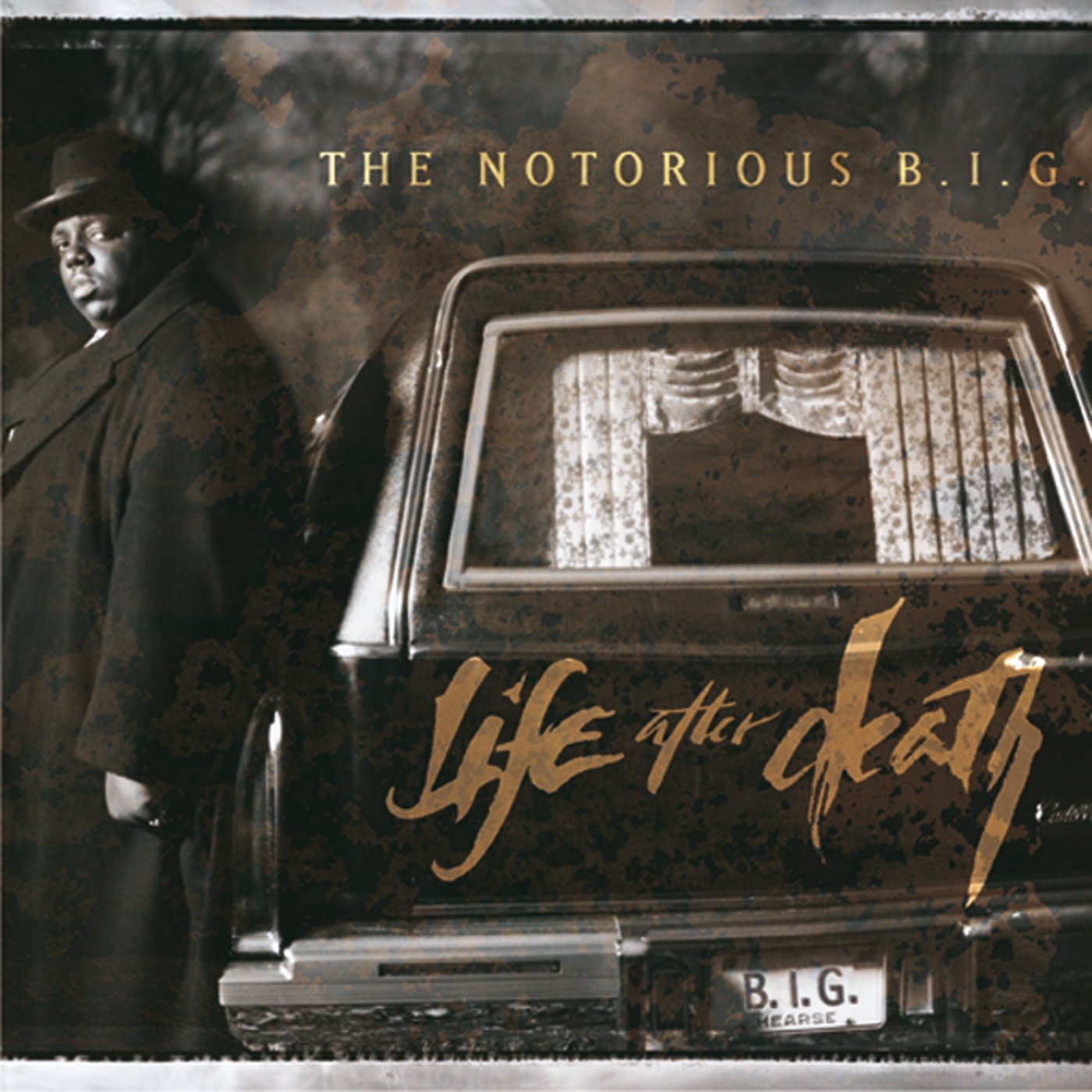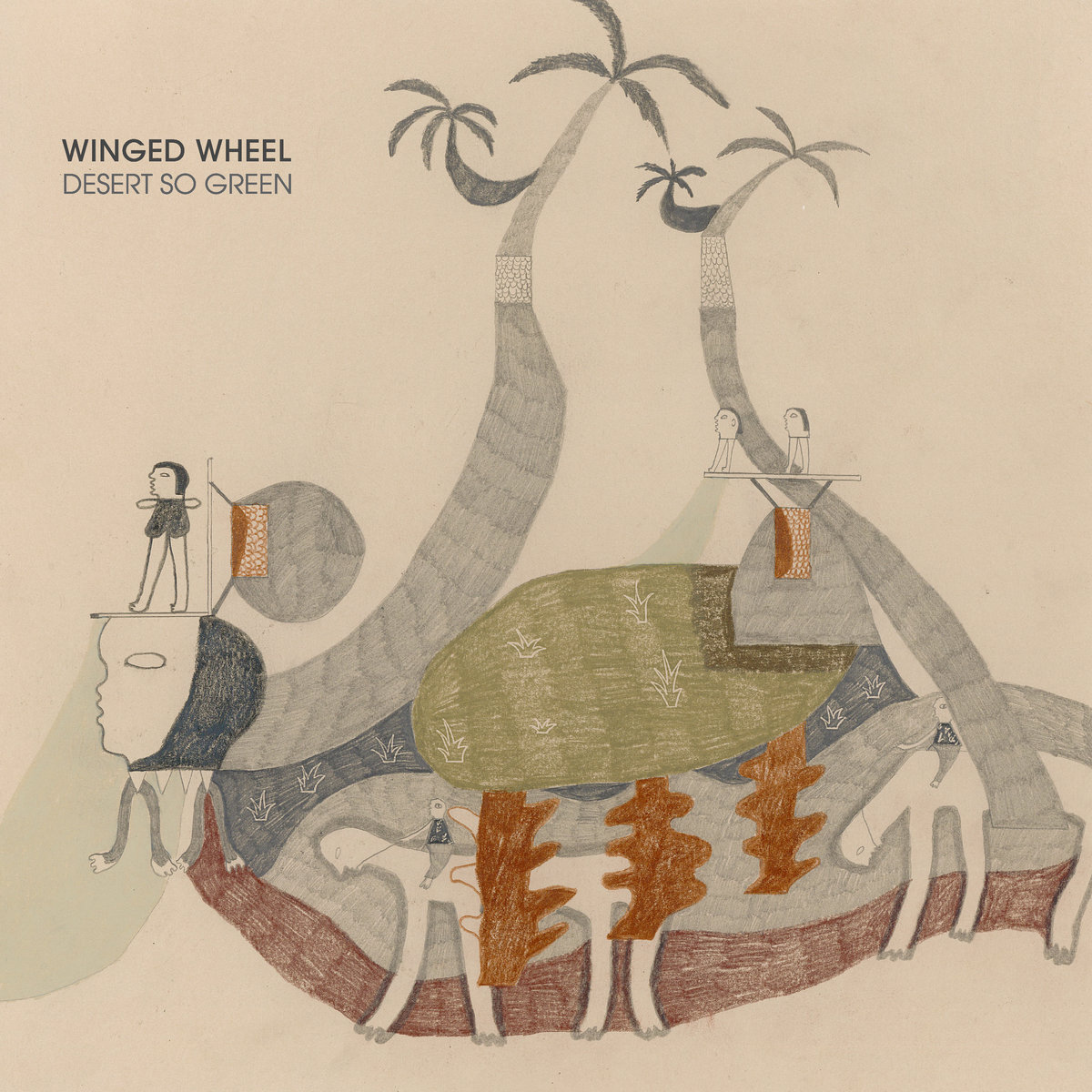Perhaps the greatest testament to the power of Life After Death, the second and final album from the Notorious B.I.G., was that Biggie's death somehow didn't overshadow it. By all rights, that's exactly what should've happened. Here, we had the single greatest talent of his generation cut down in his prime -- or maybe, since he was only 24, before he'd even had a chance to reach his prime. It was sudden and shocking and violent, and the murder remains unsolved. Life After Death came out barely two weeks later. It is called Life After Death, which is, in retrospect, even weirder than Hole recording an album called Live Through This before Kurt Cobain's suicide and then releasing it almost immediately afterward. It ends with a song called "You're Nobody Till Somebody Kills You" -- and in Biggie's case, that turned out to be vaguely true. (Biggie was a star before his death, but he became a genre-transcending superstar afterward.) All these morbid, poetic coincidences should dominate the album's narrative. And yet Life After Death took on a life of its own. It became a document of celebration, not sadness. It wrote its own narrative.
During the summer of 1997, no song was more inescapable than "Mo Money Mo Problems" -- not even Puff Daddy's chart-dominating Biggie elegy "I'll Be Missing You." That summer, I was a camp counselor, and one of my co-workers would walk around with a boom box playing "Mo Money Mo Problems" on endless repeat. (Seriously: That thing was never off, and it was never any other song.) I liked that song, then hated it, then learned to love it. "Mo Money Mo Problems" and "Hypnotize," the album's first single, represent the dawn of the Bad Boy era. Bad Boy had been doing just fine for itself before those singles hit, but the bottle-popping, shiny-suit-rocking, expensive-sample-flaunting aesthetic really came into being with those two jolts of bracing, big-budget euphoria.
As a producer, Puffy drew on the dizzy opulence of the disco era, using that flash and pizazz to animate Biggie raps that were just as grimy and charismatic as they'd ever been. Biggie wasn't holding back on those songs. On "Mo Money Mo Problems," Biggie rapped about paranoia, about being sure feds were still after him. On "Hypnotize," he rapped about avoiding prison by kidnapping an accuser's daughter. But nobody thought of those songs as hard street records. And nobody cried over them, either. They were pure party music, some of the most beautifully realized of my lifetime. And if you play them at a party tonight, you will learn that they still work.
But those songs do not, of course, represent the totality of Life After Death. The album contains multitudes. In fact, it might contain too many multitudes. That might be its greatest liability. Consider: The album's first song -- after an eerily prophetic skit in which Puffy sits at a comatose Biggie's bedside, lamenting -- is "Somebody's Gotta Die," one of Biggie's most breathlessly intense story-songs. It's a song about plotting the death of someone who killed one of Biggie's friends, and he renders it in minute, granular detail, building tension like a master auteur. It ends with narrative jolt as nasty as anything you'll find in a transgressive European art movie: Biggie suddenly realizes he's accidentally shot his enemy's baby daughter. And from there, we go directly into "Hypnotize," one of the greatest party-songs in rap history. It's hard to imagine a more abrupt, disorienting transition. And yet Biggie made it work because he made everything work.
Consider: The late '90s were the era of the overstuffed megabudget Hollywood action movie. 1997, the year of Life After Death, was also the year of Face/Off and Con Air and Air Force One. Those movies are huge and overwhelming and weird as fuck, with tender emotional moments awkwardly sandwiched in between explosive setpieces. And like Life After Death, those movies did tremendous numbers. Biggie didn't live to see any of them, but there must've been something in the air -- and, in any case, he did live to see 1996's tonally whiplash-inducing Long Kiss Goodnight, since he named a song after it. Puffy builds the album the same way Michael Bay might put together a movie. As Biggie's words about killing a baby fade, we hear sound effects: pattering rain, rumbling thunder, a kid crying.
For a 1994 New York rap album, Biggie's debut Ready To Die had been awfully lush and cinematic. But Ready To Die is practically lo-fi compared to Life After Death. In a previous era, Biggie might've recorded "Somebody's Gotta Die" over tense, urgent New York neck-snap music. But on Life After Death, it's grand and expansive and spacious, all weeping strings and ghostly guitar-pings and radio-play sound-effect accompaniment. (It's built on a sample of a song, the Dramatics' "In The Rain," that helped exemplify the heights of a previous era's symphonic soul-music sweep.) The other street songs on Life After Death -- "What's Beef," "Niggas Bleed" -- are, by and large, just as slick and widescreen. Lyrically, the Biggie of those songs is darker than he'd ever been: "Don't they know my nigga Gutter fuckin' kidnap kids? / Fuck 'em in the ass, throw 'em over the bridge?" But the production moves it somehow beyond street-rap, into the realm of fucked-up gangster-movie fantasy.
There is New York music on Life After Death. There are two tracks that Biggie made with DJ Premier, the producer who more or less defined the sound of the city (despite actually being from Houston) and who was hitting his peak just as Biggie was. On "Kick In The Door," Biggie had words for every single one of his hometown rivals. He never addressed Jeru The Damaja or Raekwon or Nas by name, but he sent pointed threats to each of them. (Years later, Nas actually bragged, through song, of being Biggie's target on that song.) "10 Crack Commandments," meanwhile, might be the single greatest track of Premier's career. It's a fascinating and convincing list of advice bullet-points for anyone selling drugs, and it helped set the stage, at least spiritually, for the Southern drug-rap that would conquer the genre nearly a decade later. And then there's "Last Day," co-produced by Mobb Deep mastermind Havoc, on which Biggie raps alongside new Bad Boy signees the Lox and introduces a brooding sonic signature that would define raw New York street-rap for years to come, from DMX to 50 Cent.
But those New York records weren't the point for Biggie anymore. Instead, on those songs, he was simply serving one of his many constituencies. His focus, this time around, was a whole lot broader. He was making global music. Up until this point, you could almost look at the American rap scene as a landscape of city-states. New York had its own sound, and so did Los Angeles and Miami and Memphis and Detroit and Houston and Oakland and every other city with a rap scene worth mentioning. But with Life After Death, Biggie and Puffy ended that. They drew from all over the place. Consider: As one of the central figures in the overblown-but-real East/West feud, Biggie was basically beefing with an entire coast when he was recording Life After Death. But even in the midst of all that, he was still making California music. "Going Back To Cali" is Biggie's take on slick G-funk, Biggie rapping about how much he loves spending time in California while still threatening anyone who might come at him while he's out there. And on "The World Is Filled...," he tried his hand at funky, slow-rolling Bay Area mob music, with Oakland legend Too $hort breaking with West Coast orthodoxy and adding a nastily effective guest verse.
The versatility didn't stop there, either. "Notorious Thugs" brings in Bone Thugs-N-Harmony and finds Biggie ready and willing to adapt their melodious, stop-start Midwestern quick-tongue flow to his own delivery. (That song, more than any other, convinces me that Biggie would've been fine even as the South took over rap music. He knew how to do new things with his cadence. Of Biggie's surviving New York peers, only Jay Z would prove capable of making similar adjustments.) "Nasty Boy" and "Another" pick up at least a few tricks from squelchy Miami sex-funk. And then there's "Player Hater," a honking and amelodic sung-not-rapped quasi-comedy record that could pass for Ol' Dirty Bastard, or Blowfly.
After Life After Death, any rapper who wanted to reach the A-list had to do away with any idea of a regional sound or a comfort zone. Mostly, this turned out to be a bad thing. Whereas a few masters like Jay or (to some extent) OutKast could find ways to bring in other sounds without compromising their own voices, most rappers sounded lost and confused when they tried to replicate those tricks. Most of the major-label rap albums of the '00s show the aftereffects. They're patchwork affairs, doing away with cohesion in an effort to please every possible demographic. Street tracks sit uncomfortably next to club bangers and R&B love songs, as if every rapper had to check every item on a list. If you wanted to, you could look at Life After Death as the rap-history equivalent of Jaws or Star Wars: an undeniably brilliant work that nevertheless ended a period of boundless creativity and experimentation, showing the powers that be that there was money out there to chase if they put their focus on blockbusters instead of finely observed personal works. From that perspective, a Tribe Called Quest and MC Eiht become the equivalents of Peter Bogdanovich or Hal Ashby. They're the geniuses who got left behind.
But that formulation does a disservice to Biggie, to what he showed he could do on Life After Death. Where the larger-than-life cinematic reach of Life After Death might've drowned out or overshadowed any other rapper's voice, it actually enhanced what Biggie was doing. If anything, he became a better rapper on his second album. He took the challenge and ran with it, finding new ways to project his writerly focus and enormous personality. The storytelling songs on Life After Death are light years beyond what anyone else was doing with the form at the time. Where a record like the R. Kelly collab "Fuckin' You Tonight" would've been a rote for-the-ladies affair in almost anyone else's hands, Biggie used it as an opportunity for ribald, horny fun, undercutting the romantic sonics by turning them into a dirty joke. And the emotional songs, like "Sky's The Limit" or "Miss You," drew attention to the human being behind all these pyrotechnics, to the impossible odds that he'd beaten just by, for a brief moment, succeeding in life.
And that's the grand irony at the center of Life After Death: The man who made it didn't live to see it going out into the world, but even today, it's one of the most alive rap albums you'll ever hear. It's the album that was destined to take over the world. Not even death could stop it.






